Uncover Germany’s ancient past, its medieval architecture, and Charlamagne’s shrine
We’ve really fallen in love with Germany over the last few years. The more we unearth about its ancient history and varied regions, the more we want to visit.
For us, it’s another fantastic excuse to venture off on a road trip of discovery. With our love of history, it means we can visit some incredible UNESCO World Heritage Sites.
Visiting some of the UNESCO sites in Germany really reveals an intriguing insight into not only Germany’s extraordinary past but how it is interwoven within Europe’s historical timelines.
We’ve updated this post and now have eight UNESCO World Heritage sites in Germany for you to browse through; however, there are so many more for us to add to our list.
We’ve selected eight UNESCO World Heritage sites in Germany for you to browse through; however, there are so many more for us to add to our list.
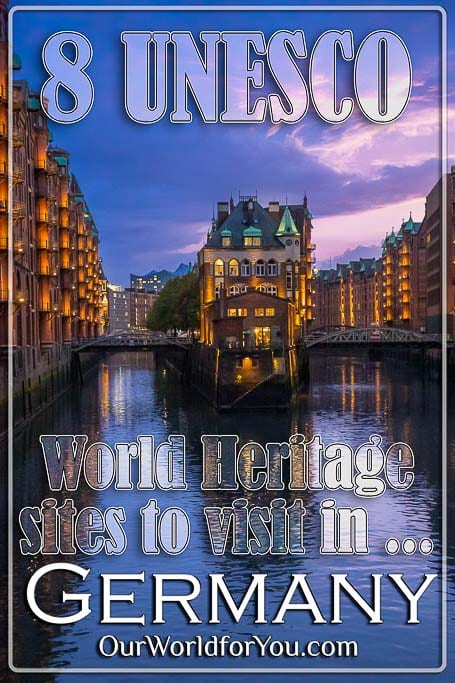
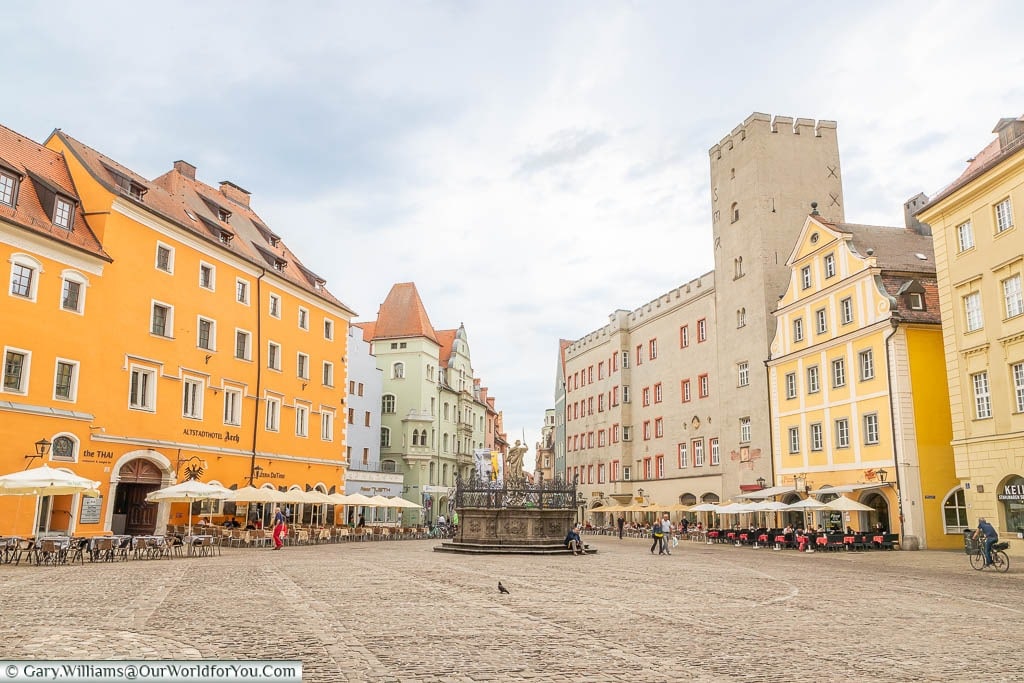
Our 8 UNESCO Sites
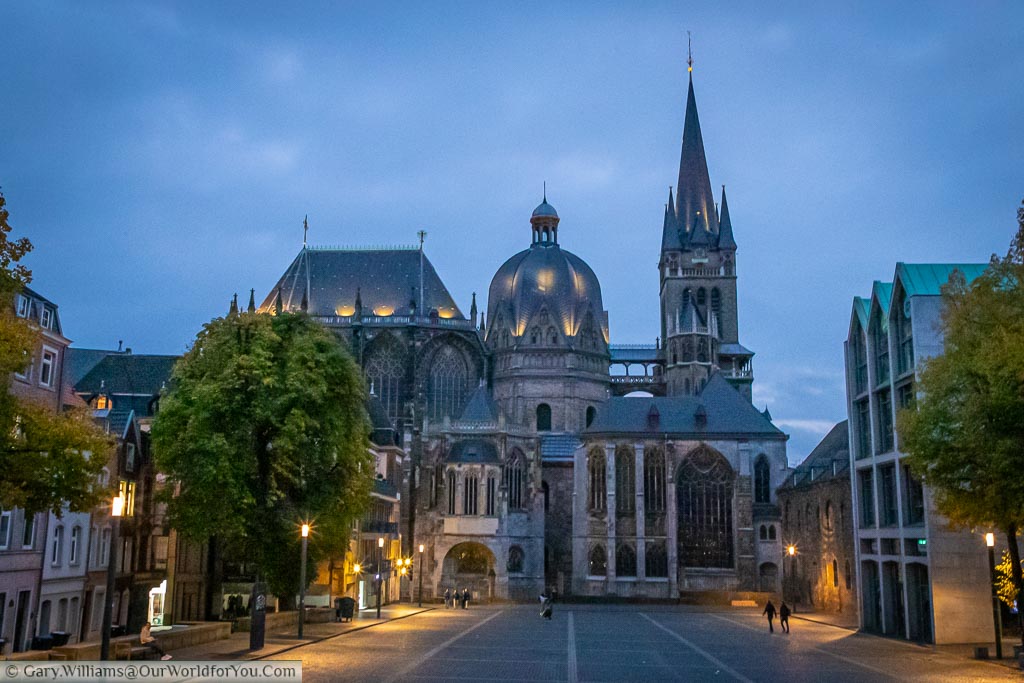
Aachen Dom was the first monument in Germany to be given UNESCO World Heritage Site status, 1978. It was also one of the first 12 sites to be listed by UNESCO.
Aachen Cathedral is incredibly striking from the outside; however, it is breath-taking once you step inside the 1,200-year-old cathedral.
Charlamagne (Charles the Great), the first Holy Roman Emperor, visited Aachen on many occasions and subsequently had a palace built near the Roman Baths.
The original section of Aachen Cathedral is the octagonal St Mary’s Chapel, which was constructed on the order of Charlamagne in 793. The octagonal chapel still remains today, and when you step through the 8th-century bronze doors, you are taken aback at how exquisite it is.
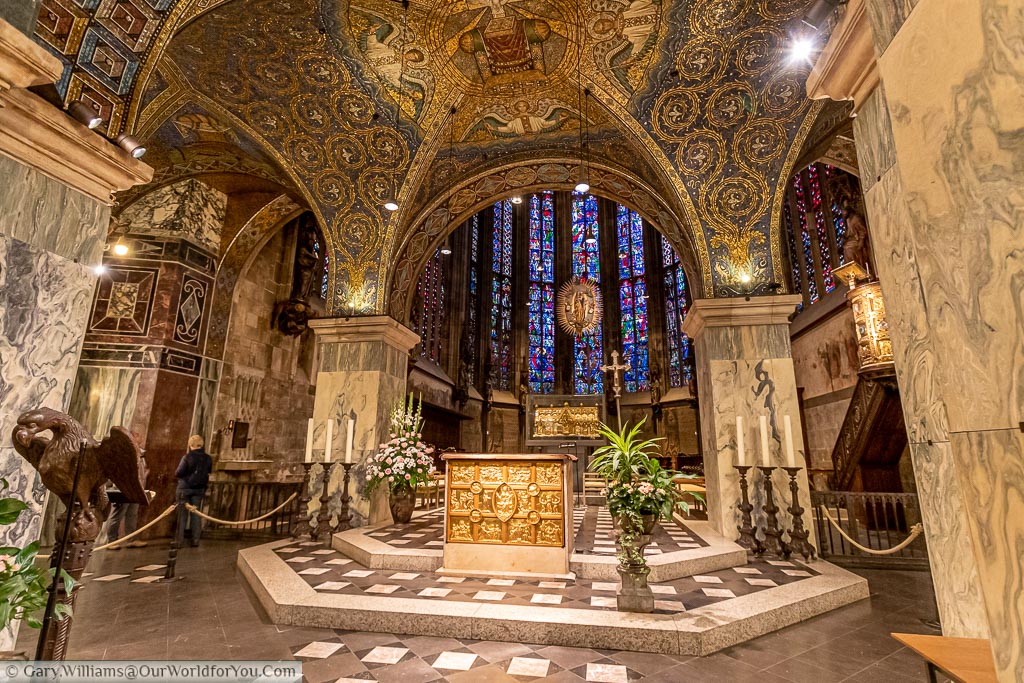
The original pillars still support the internal arches, which have been enhanced over the centuries. The beautiful striped arches almost have a Moorish feel about them.
Aachen Cathedral was extended for the 600th anniversary of Charlamagne’s death, and in 1414 a Gothic Chancel was added. I think it just adds to its magnificence.
Charlemagne died in 814 and rests within the chapel in the golden Karlsschrein.
During our visit to Aachen, we stayed at the Mercure Hotel Aachen Europaplatz. Set in a peaceful location, slightly out of the city centre, which was ideal for us, as there were ample parking and only a 10 minutes bus journey into town. The room was very comfortable, clean and there was a wide variety of food and drinks for breakfast.
Good to know
Our next UNESCO location is the Old town of Regensburg; this beautiful Bavarian city was added to the UNESCO World Heritage List in 2006.
Regensburg is nestled along the banks of the River Danube in a beautiful part of the world. Street after street or strasse für strasse attractive, colourful Medieval buildings are immaculately maintained.
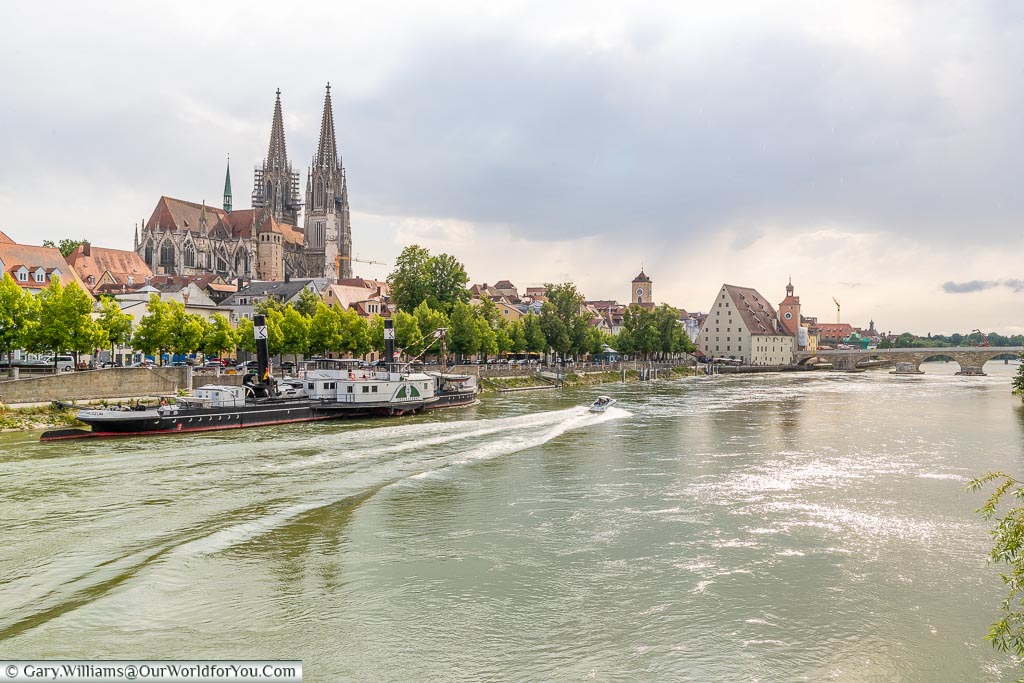
Within the narrow-cobbled lanes of the Old Town, there are so many historical dwellings dating back centuries. The combination of Roman, Gothic and Romanesque architecture makes Regensburg a delightful city to visit and has around 1,500 listed buildings.
For the iconic backdrop of Regensburg city and its striking cathedral, head north over the old Stone Bridge, towards Stadtamhof.
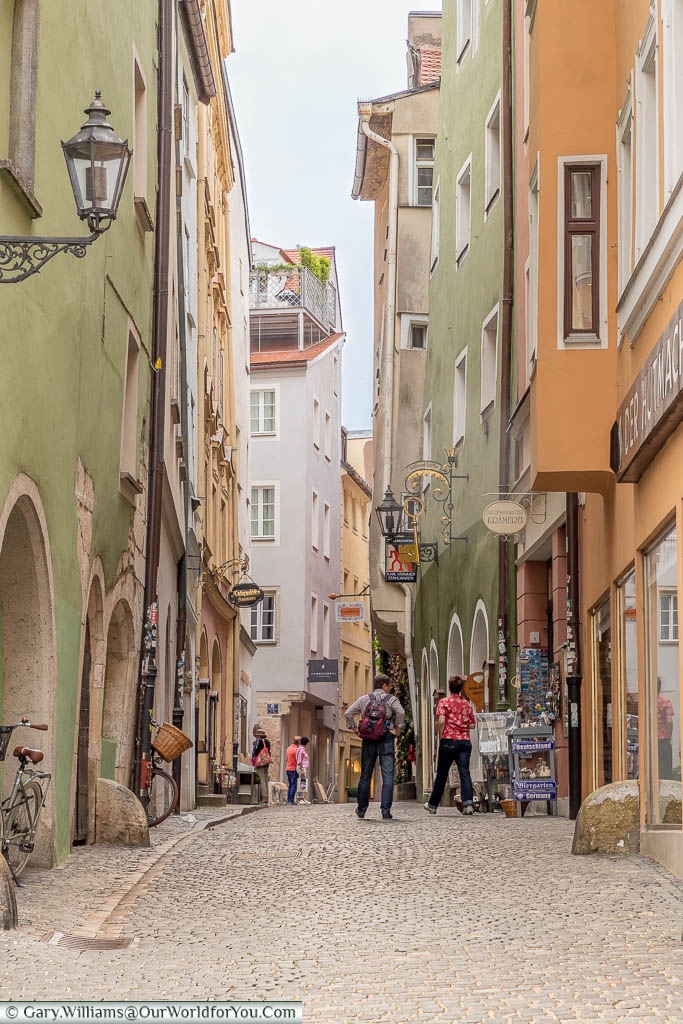
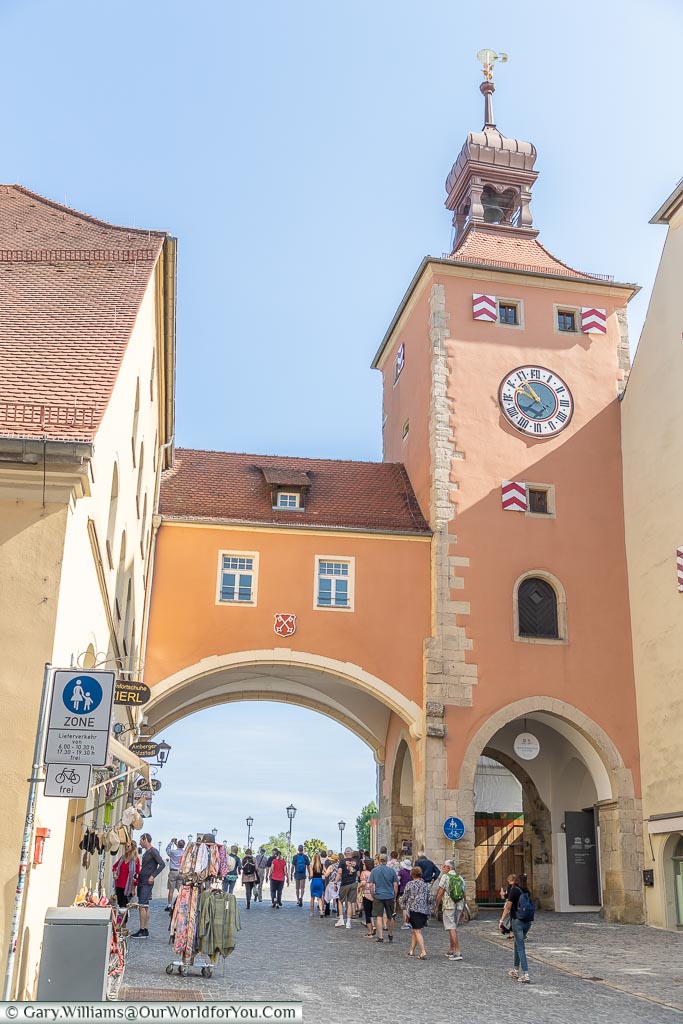
The 12th-century bridge spans the Danube River with 16 arches; due to years of wear and tear and maintenance, the bridge is only accessible by pedestrians, which is perfect.
Once over the bridge, don’t miss the opportunity to visit Stadtamhof, the vibrant island in the middle of the Danube. This is a delightful place to stroll around and has a real feel of mixing with the locals.
If you’d like to find out more about the Old Town of Regensburg’s and its historical past, why not jump on a 45-minute audio guide train tour?
We have created a little YouTube video of Regensburg to give you a taster of the town. Click on the thumbnail to open in in YouTube
Why not subscribe to our YouTube channel and get the latest clips as we post them?
During our visit to Regensburg, we stayed at the Eurostars Park Hotel Maximilian.
It was perfect for us, not only was it short walk to the old town but it also had an underground car park, which was suitable for the larger car. The bedroom was clean and very comfortable.
Heading north in Germany, we visit the Hanseatic port city of Hamburg with its historical and characteristic warehouse district.
Speicherstadt is a fascinating area to stroll around during the day, especially in the evening as dusk is drawing in. The charming canal-side warehouses illuminate.
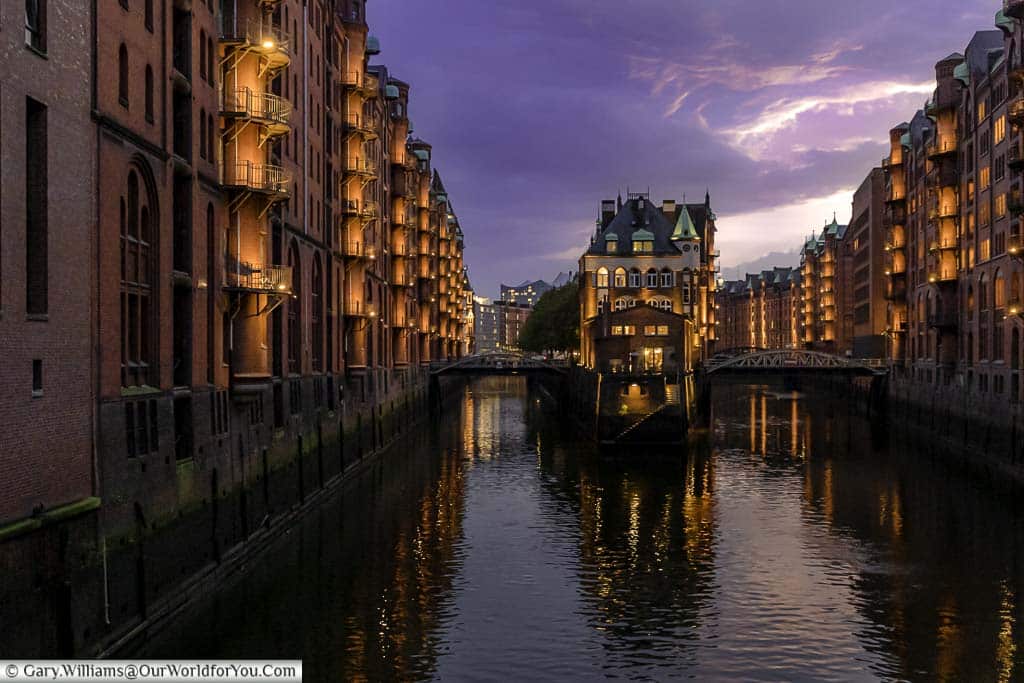
Woven amongst Hamburg’s ‘warehouse city’ between the striking neo-gothic red brick buildings are deep canals and sturdy iron bridges straddling the waterways. The warehouses were erected into the Elbe River on oak poles between 1883 and the 1920s, covering 260,000 square metres, making it the world largest complex of warehouses.
During its maritime heyday, this district of HafenCity would have been a bustling part of Hamburg, with its dockworkers coming and going, loading and unloading their goods.
The Speicherstadt and Kontorhaus District with Chilehaus was inscribed onto the UNESCO World Heritage List in 2015 and became Germany’s 40th UNESCO site.
While in the HafenCity neighbourhood, take a visit to Miniatur Wunderland, an amazing model railway. Now, this wouldn’t usually be my cup-of-tea, but I came away loving it; the detail and passion involved were incredible.
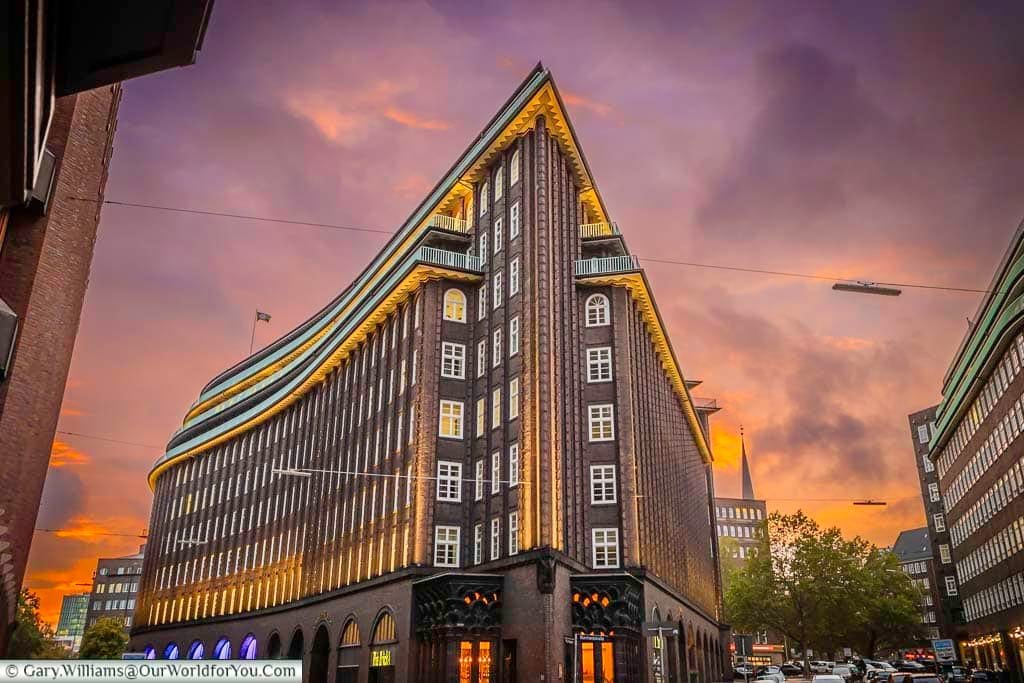
The Chile House was built in the 1920s and constructed in the style of Brick Expressionism; the 10-storey office building was designed by the architect Fritz Höger. The beautiful, unique lines that have been created are in the shape of a ship’s prow and are even more elegant and stunning when it is illuminated of an evening.
Again we have a YouTube video. Why not check it out?
Our accommodation while we were in Hamburg, was at the Adina Apartment Hotel Hamburg Speicherstadt. It is only about a 5-minute walk to the centre of town in one direction and then around 5 minutes the other way to Speicherstadt, a fantastic location.
It also had onsite parking, which was one of the reasons we chose it. I would highly recommend this hotel, and the staff were extremely helpful.
If you've yet to discover Hamburg, then let’s start planning. I find these DK Travel Guides invaluable, they're extremely informative, easy to follow, and the pictures and maps tempt you into discovering more of those fascinating sites.
You can now grab a recently revised copy of this guidebook, so you won't miss a thing.
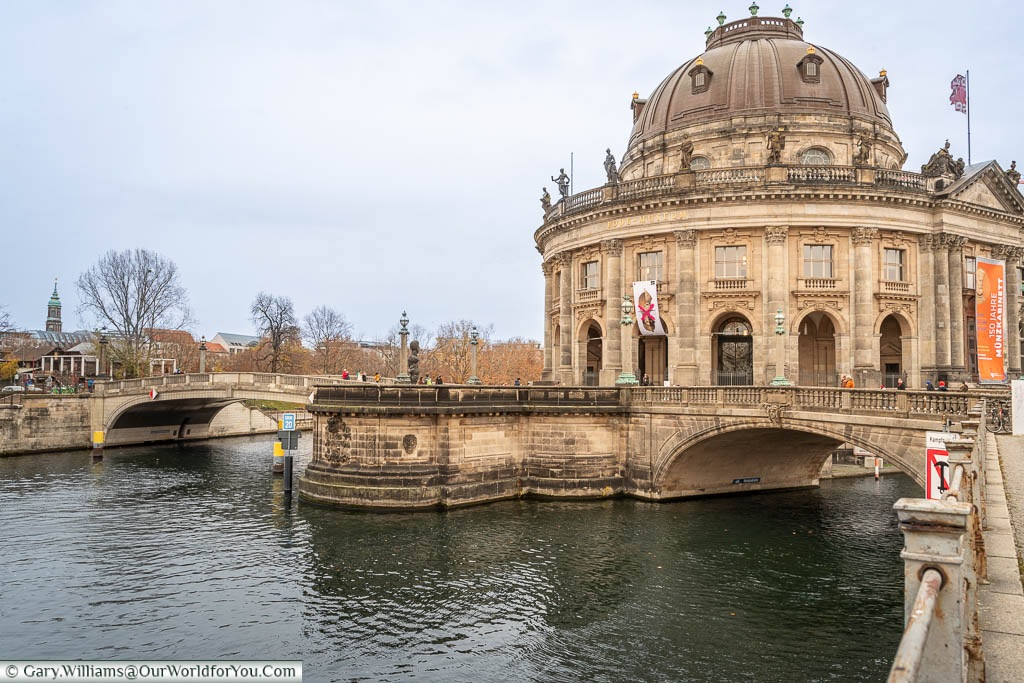
Museum Island is on the northern section of Spree Island. It consists of five principal museums that reflect significant movements and origins in Germany’s history.
The five museums on the Museumsinsel in Berlin were built under Prussian rule between 1824 and 1930 to the design of renowned Prussian architects.
The museums are the Altes Museum (Old Museum), the Neues Museum (New Museum), the Alte Nationalgalerie (Old National Gallery), the Bode-Museum, which sits at the tip of Spree Island and the Pergamon Museum.
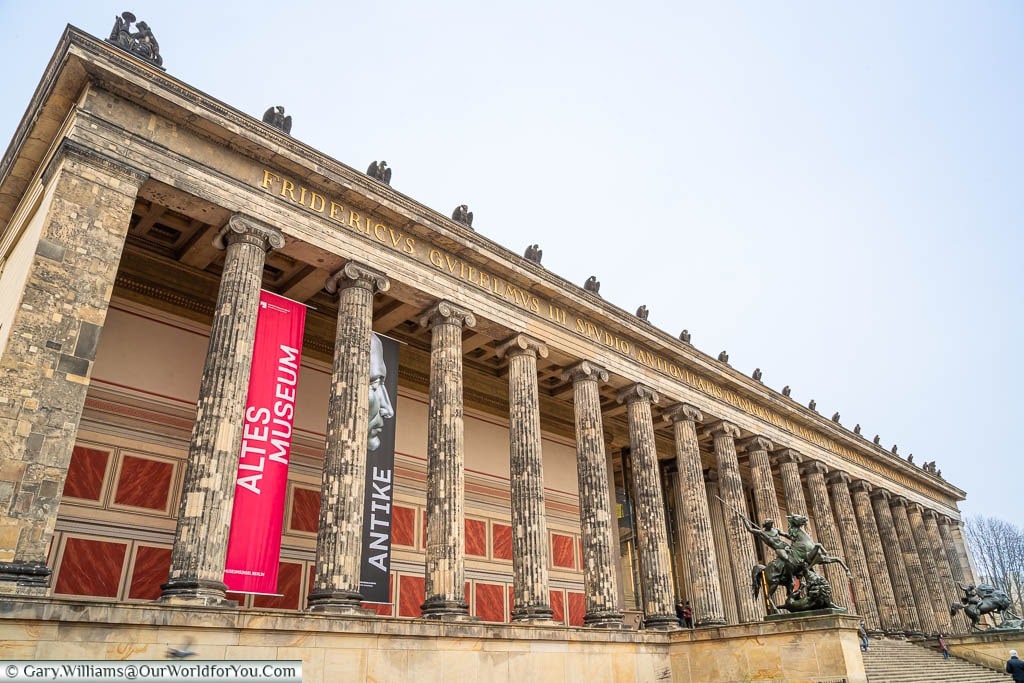
Throughout the historical museums are incredible works of art, sculptures, antiquities and artefacts, there’s something for everyone.
The ensemble of Museumsinsel (Museum Island) was added to the UNESCO World Heritage List in 1999.
If you’d like to give your feet a rest after visiting the museums, hop on this 2.5-hour boat cruise along the River Spree and around Museum Island. You’ll get a lovely perspective of the museums in comfort.
During our visit to Berlin we stayed at the Adina Apartment Hotel Berlin Checkpoint Charlie. A nice hotel with friendly staff. A short stroll from the Gendarmenmarkt and of course, Checkpoint Charlie.
If you've yet to discover Berlin's incredible history, then let’s start planning. I find these DK Travel Guides invaluable, they're extremely informative, easy to follow, and the pictures and maps tempt you into discovering more of those fascinating sites.
You can now grab a recently revised copy of this guidebook, so you won't miss a thing.
Tempted with Germany?
Heading to the north-west of Germany and we are in the charming Hanseatic City of Bremen. Such an attractive city it is too.
The UNESCO World Heritage Site in Bremen is the Town Hall and the statue of Roland on the Marketplace and was inscribed onto the list in 2004.
The magnificent façade of Bremen Old Town Hall was built as a Gothic hall structure in the early 15th century and is the centrepiece of Bremen. The two-storey rectangular Rathaus is created in the Weser-Renaissance-style and believed to be one of Germany's finest civic buildings.
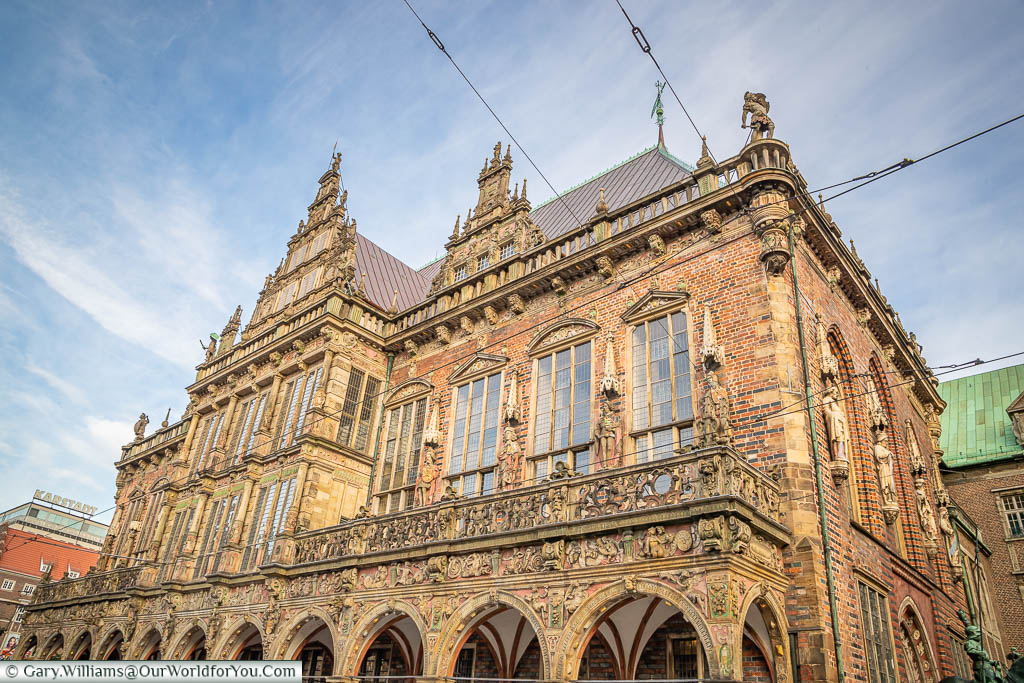
Bremen Old Town Hall was completed in 1410 during the late Middle Ages. It is the only European town hall that has not been altered and has survived for centuries, avoiding destruction and conflicts.
Within the historic Rathaus's cellar is Germany’s oldest cask of wine, dating from 1635; you won’t be able to sample it; even the Bremen Mayor isn’t allowed that privilege.
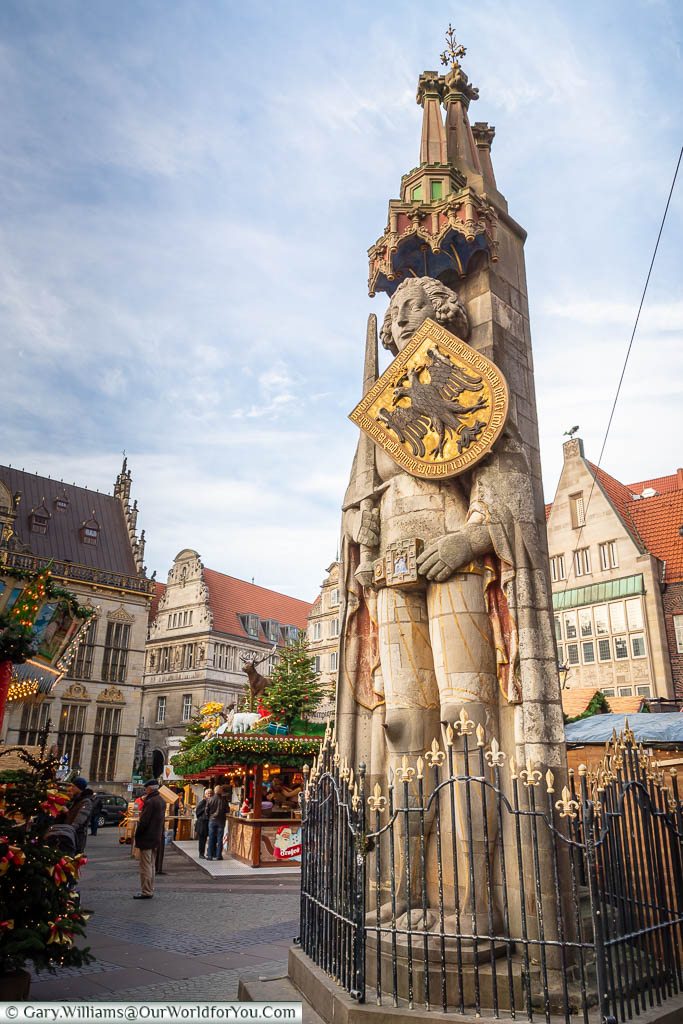
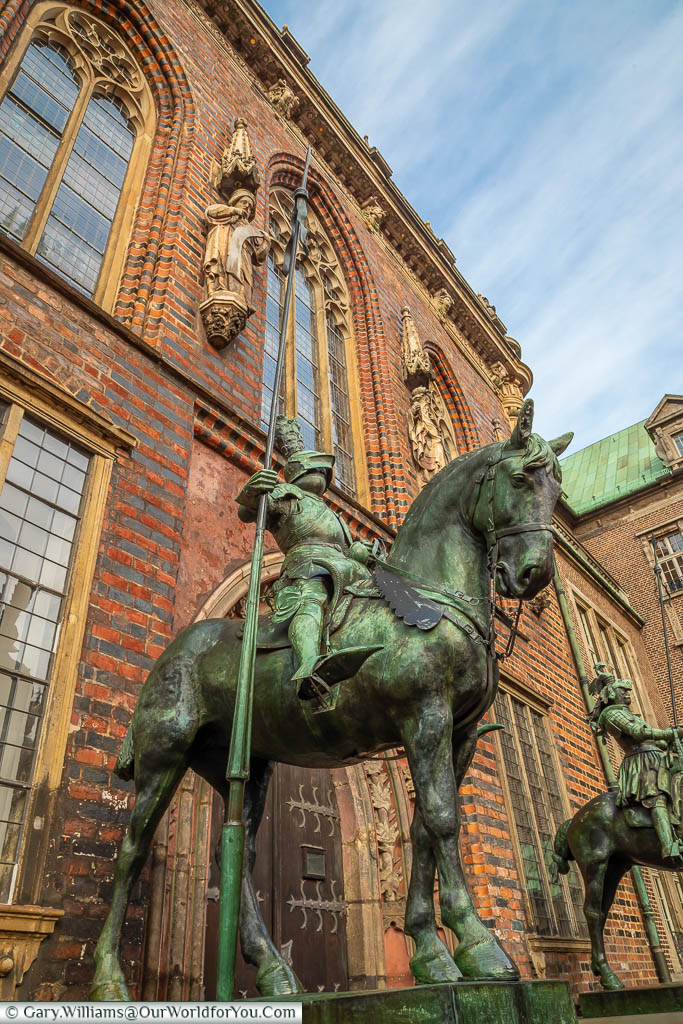
The ancient Roland statute standing in Rathausplatz and adjacent to Bremen Old Town Hall symbolises ‘freedom and trading rights’. This is an important image to many German towns and cities, particularly Bremen.
The Roland statue was built in 1404 of stone and measured five and a half metres tall, and with the baldachin (canopy), it brings the total height up to just over ten metres. It’s pretty impressive.
The imposing statue replaces its wooden predecessor, which was destroyed in 1366.
We journeyed to Bremen on a road trip in 2018 to visit their enchanting Christmas Markets, and they were magical. I would highly recommend a yuletide trip. You could even include a Christmas visit to Hamburg.
Our accommodation for the two nights, we stayed in Bremen was at ACHAT Hotel Bremen City. Which is only about 8 minutes’ walk from the Altstadt so an ideal location.
It also had onsite parking, which was one of the reasons we chose it. I would highly recommend this hotel, and the staff were extremely helpful.
In our opinion
We’re now off to Cologne to visit the magnificent Cathedral Church of Saint Peter, also known as Cologne Dom.
Cologne Cathedral is an excellent example of Gothic architecture. This grand icon of Cologne can be seen from miles around. Its construction began in 1248 and continued over seven centuries until it was completed in 1880.
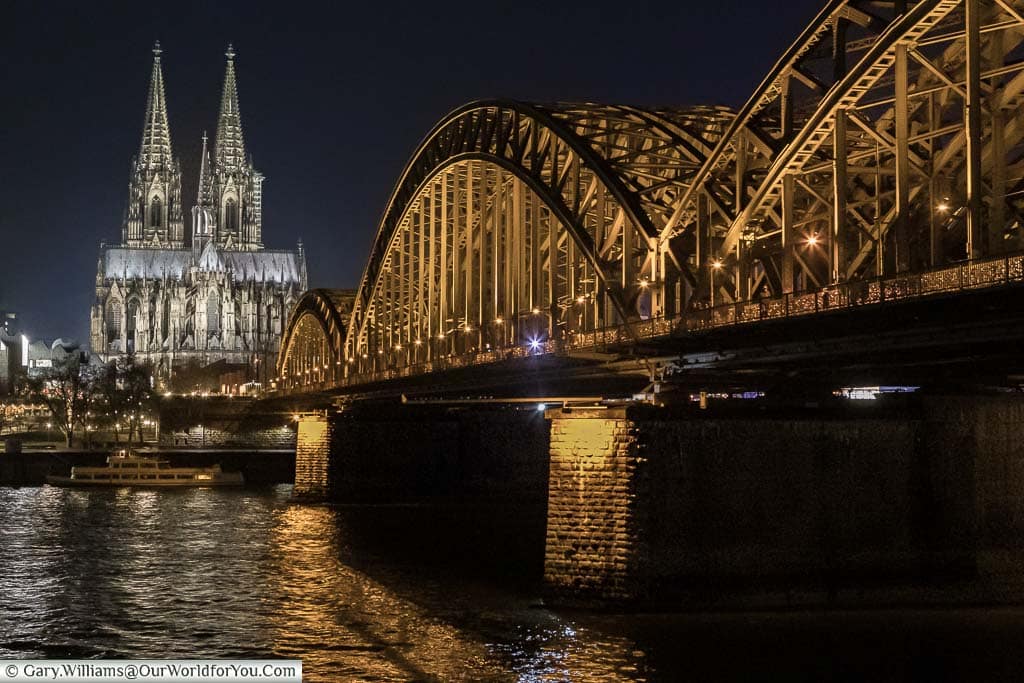
The towering spires' intricate façade stands 515 feet (157.22 metres) tall, making it the tallest twin-spired church in the world. It truly is a masterpiece, and no question at all that in 1996, it should have become a UNESCO World Heritage Site.
When you step inside the basilica, it is breath-taking; the five aisles appear to endlessly unfold before you, stretching all the way to the black marble High Altar, which was mounted in 1322.
Amongst other treasures within Cologne Cathedral is the Shrine of the Three Kings. The large gilded triple sarcophagus is believed to contain the bones of the Three Wise Men.
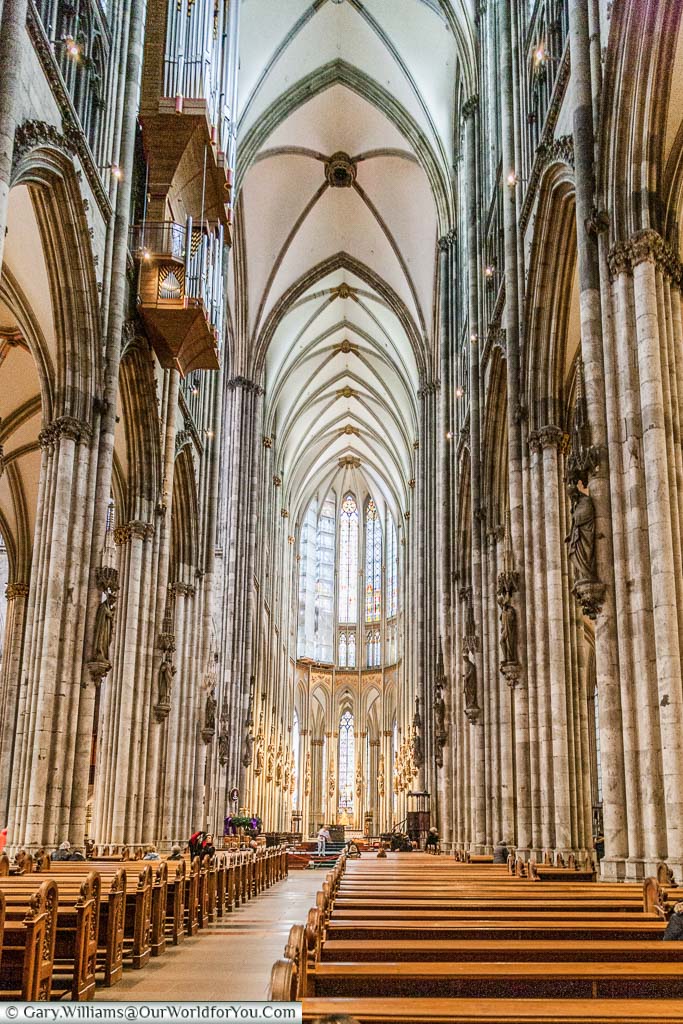
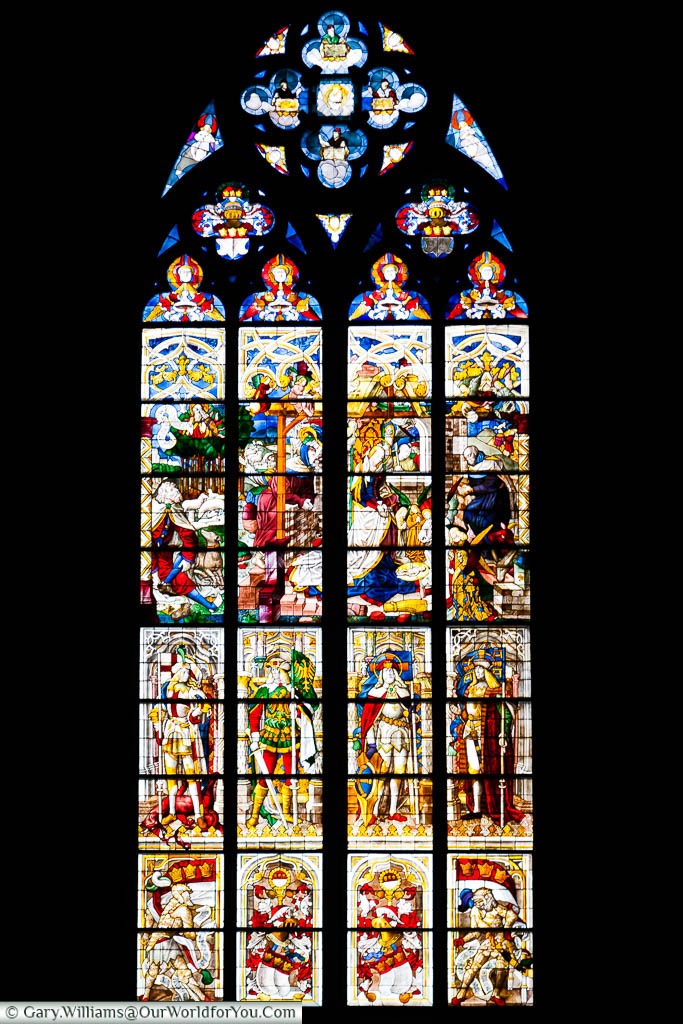
Cologne Cathedral is free to visit; however, if you wish to climb the 533 stone steps to the viewing platform, which is around 330 ft above the ground, then there is a small charge.
If you can, hang around in Cologne until dusk and witness the beautiful cathedral illuminated in the evening. You can always pass the time with a cheeky glass of Kölsch beer.
If you're visiting Cologne we can highly recommend staying at the Eden Hotel Früh am Dom. Located in the heart of the city with an incredible view of Cologne Cathedral. We've stayed at Eden Hotel on many occasions and this central hotel never disappoints. It is owned by the Früh Brewery and has a bustling restaurant in its cellar.
I love nothing more than planning a trip and so often I use the DK Eyewitness books. I find them extremely informative, easy to follow and the pictures and maps tempt you into discovering more.
We used a previous version of this book to plan our Germany road trips, now you can grab the revised copy.
Back to Bavaria in the south of Germany and mores specifically the Upper Franconian region.
Bamberg is an extremely picturesque town in Bavaria and full of so much character and charm all through its medieval streets. It’s regarded as one of Germany’s most beautiful towns.
Bamberg had played an important role in history, dating from the 10th century when Henry II, Duke of Bavaria, became King of Germany in 1007 and made Bamberg a bishopric seat.
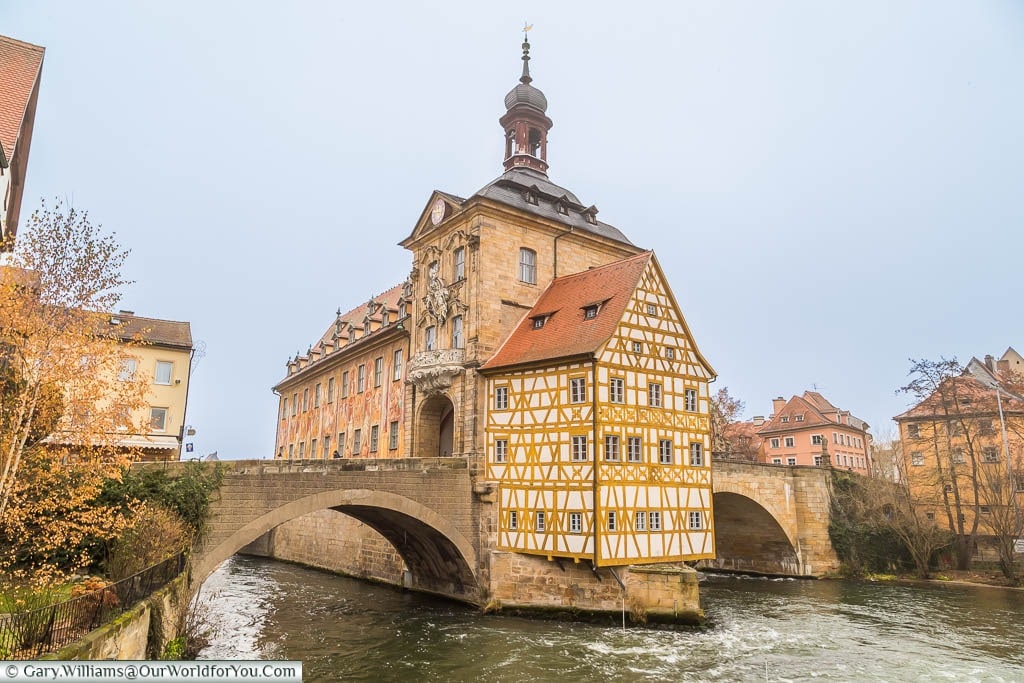
The historic cathedral that holds the tombs of Emperor Henry II and Pope Clement II forms part of the UNESCO World Heritage Site, which unsurprisingly includes the whole of Bamberg’s Old Town.
Bamberg’s Altstadt is flowing with striking medieval architecture and so devotedly preserved. The building that I especially loved was the Rathaus (the Old Town Hall), which was constructed in the middle of the Regnitz River.
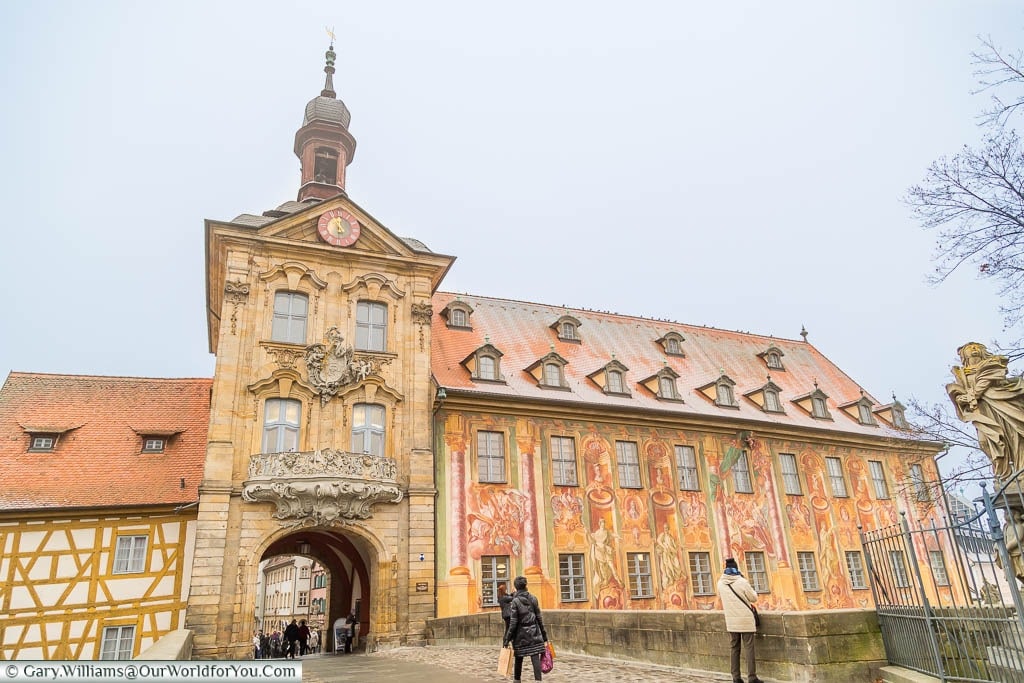
The Rathaus was built in 1386 and is linked by two bridges with an attractive ornate archway to stroll through. Initially, your eye catches the timber-framed section of the town hall teetering over the river; however, it’s the magnificent frescoes that adorn the truly impressive facades.
Also within Bamberg's ancient town is Altenburg, its castle which sits high on one of Bamberg’s seven hills, Michaelsberg Abbey and Alte Hofhaltung (the Old Palace).
I imagine that if Gary had known that they brewed smoked beer in Bamberg, that we would have stayed overnight.
The accommodation that we will be considering for our return visit to Bamberg is Le Baldinger Boutique Hotel. It's very centrally located, with a buffet and parking nearby.
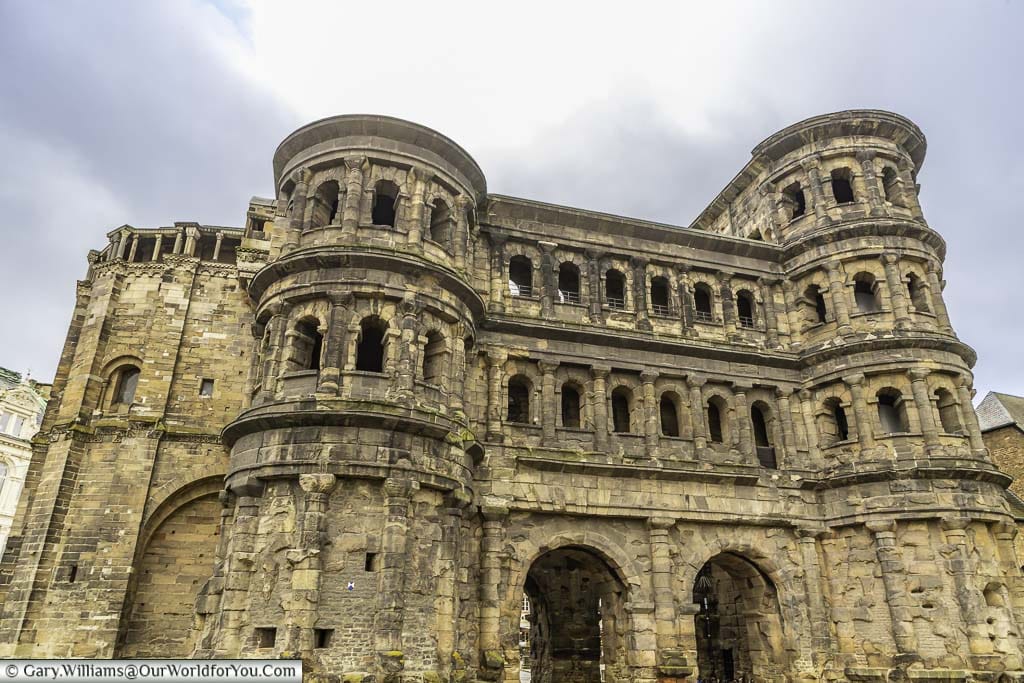
Amongst the Roman monuments in Trier is the Aula Palatina Roman Basilica, the ruins of the Imperial Baths, Barbara Baths and Forum Baths, an impressive amphitheatre, and a Roman Bridge.
However, in my opinion, the most remarkable of all the Roman monuments in Trier are the magnificent Porta Nigra, the ‘Black Gate’, which was erected by the Romans in AD 170. This imposing gate is the last remaining of the four gates that once encircled Trier along with the city walls.

The Aula Palatina Roman Basilica was constructed on the order of the Roman Emperor Constantine the Great around AD 310. It is now known as the ‘Basilica of Constantine’ and once formed part of the Roman Emperor’s palace.
Along with the Porta Nigra another significant Roman ruin is Trier’s Roman amphitheatre. The amphitheatre was constructed into the side of a hill around the 2nd century AD. It was built to hold approximately 20,000 spectators.
Trier is overflowing with Roman history; along the Moselle River is its ancient Roman Bridge, and short hop east are the Barbara Baths, and a little beyond are the Imperial Baths.
The Barbara Baths can be accessed for free; you can stroll across an elevated walkway and envisage the magnificent spectacle of Roman times, letting your imagination run wild. The Barbara Baths were once the largest bathing complex in the Roman Empire outside of Rome.

The other Roman baths in Trier are the Imperial Baths, which were constructed in the early 4th-century during the reign of Constantine the Great. These grand baths were built around hot water pools.
The additional historic building in Trier to be included as a UNESCO site is the Cathedral of St Peter and the Church of Our Lady in Trier. The ancient Dom sits in the heart of Trier’s Altstadt and is Germany’s oldest church.
We journeyed to Trier on a road trip in 2023 to visit their enchanting Christmas Market, and it was magical. I would highly recommend a yuletide trip. You could even include a Christmas visit to nearby Koblenz.
Our accommodation for the two nights in Trier was in the Mercure Porta Nigra; this hotel was in a perfect location, overlooking the ancient Porta Nigra. The medieval Old Town was just a short hop away.
The hotel had an on-site car park, and a daily charge was applied.
Want to discover more?
* This post may contain links to affiliated sites where we earn a small commission at no additional charge to you.




Still gotta tick off Bremen. Cool post.
We really enjoyed Bremen, beautiful Market Square, and very quaint around Schnoor. It has a Glockenspiel House too, with 30 bells which is quite unusual.
Lübeck looks interesting, have you been there?